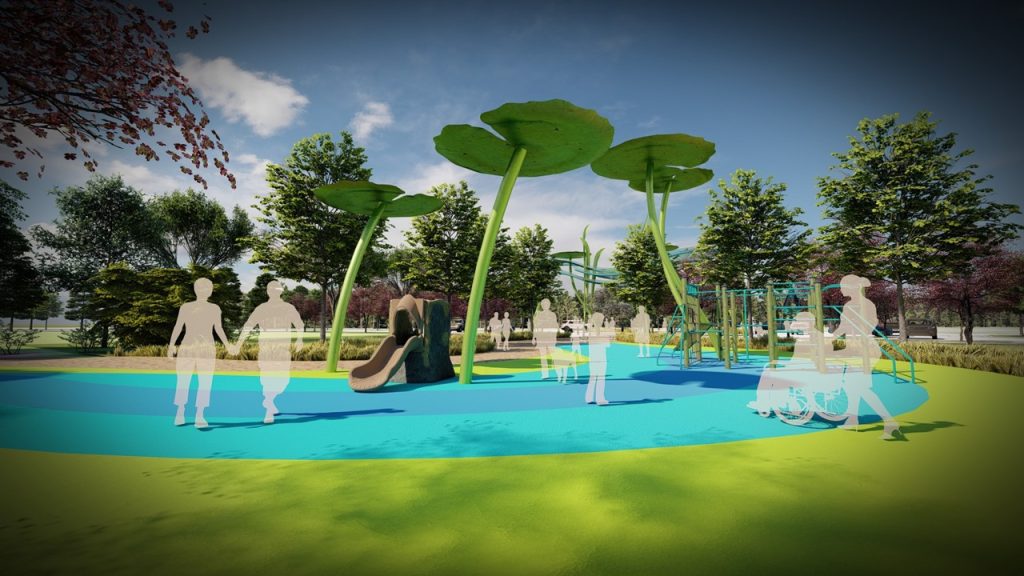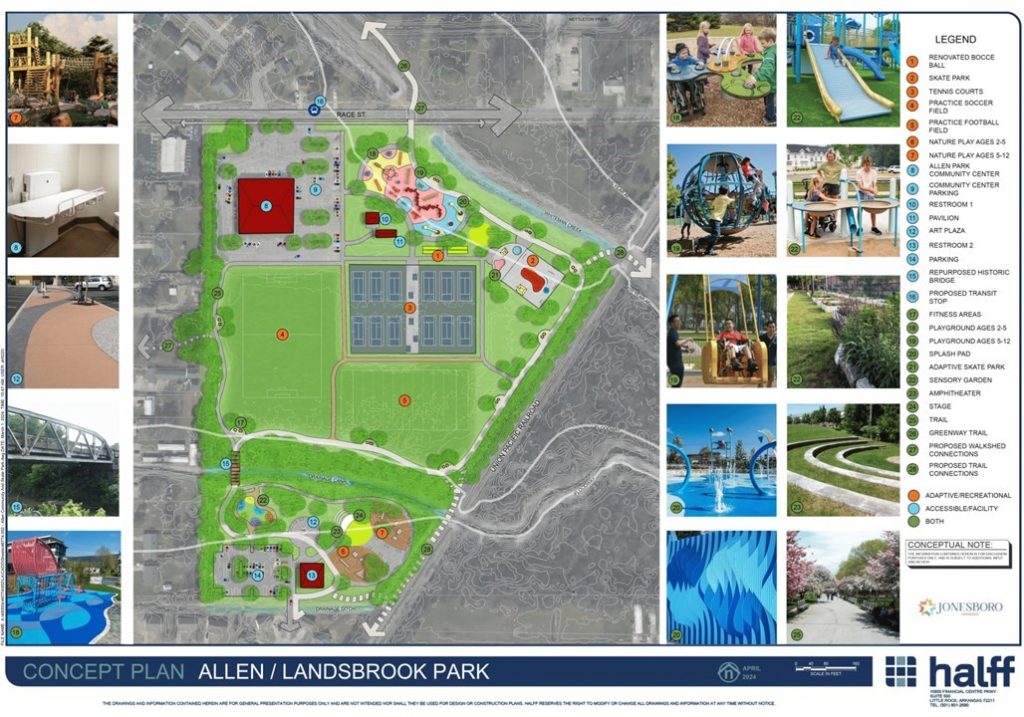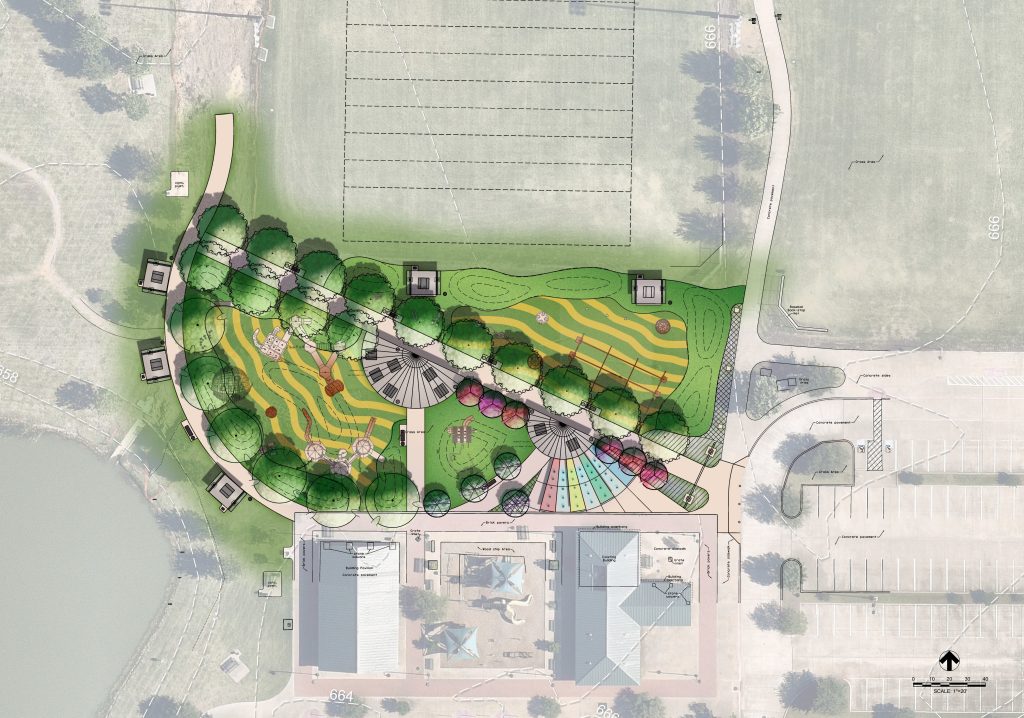Designing Space for All: Transforming Parks into Inclusive Community Hubs
According to the National Recreation and Parks Association, more than 280 million U.S. residents visited local parks or recreation spaces last year.
These places and spaces play a pivotal role in our communities, both in terms of personal enjoyment and shared community identity. Still, parks and recreation departments have faced a significant challenge: how to make these spaces both accessible and enticing for persons of all ages and abilities.
Communities are taking action to reevaluate their parks and recreation spaces and design them to be more inclusive, ensuring that all people—regardless of physical, emotional or mental capabilities—can enjoy their public recreation spaces.
Inclusive, Accessible and Adaptive Recreation
Inclusive, accessible and adaptive recreation are terms often used to describe changes and improvements to our community spaces.
These three terms, often used interchangeably, have distinct meanings when applied to a park and recreational facility design, generating different outcomes.
Inclusive recreation involves designing activities and spaces that welcome individuals of all abilities, and aims to decrease barriers by utilizing adaptations and programming accommodations. The focus is on participation and engagement for everyone, regardless of ability.
Accessible recreation ensures that facilities, programs and services are physically and programmatically accessible to people with disabilities. The focus is on removing physical barriers (e.g., adding ramps, accessible restrooms) and providing accommodations (e.g., braille signage).
Adaptive recreation uses flexibility and customization to meet individual needs. The focus is on adjusting activities based on specific requirements (e.g., communication boards, pool chair lifts, etc.).
Inclusive Recreation in Action
We don’t have to start from scratch.
Communities committed to fostering inclusivity can take measured steps to transform their existing recreational spaces. Gradual implementation ensures sustainable change, making our parks and recreation spaces welcoming for everyone.
1. Jonesboro Parks and Recreation Master Plan
As part of the Jonesboro Parks and Recreation Master Plan, the City of Jonesboro requested that Halff prepare a companion “health accelerator” plan. A grant from the U.S. Center for Disease Control and Prevention (CDC) was the catalyst behind this groundbreaking initiative that aims to enhance the community’s Social Determinants of Health (SDOH) by improving accessibility and inclusivity within the municipal parks system.
Working with a City-appointed Leadership Team, the plan’s baseline analyses assess the current accessibility of the park system and the variety of adaptive and inclusive recreational amenities available. The plan includes a detailed list of access improvements for pedestrians and individuals using mobility assistance devices to access municipal parks from nearby residential areas. Investment recommendations also expand the City’s range of recreational amenities catering to the needs of disabled individuals, and designates two conceptual “accelerator parks” which will serve as hubs of inclusive recreation opportunity.
2. Vista Ridge Park
Vista Ridge Park is a 20-acre multi-purpose park located in Lewisville, Texas. Miracle Marsh—an all-inclusive and all-abilities playground in the heart of the site—is a themed area that provides users the experience of being shrunken to experience the wetlands from the perspective of a tadpole. Large, suspended lily pads serve as shade canopies and themed all-inclusive playground equipment help support the idea of underwater adventure and education.
The Miracle Marsh surrounds a Miracle League baseball field, which allows children of all abilities the opportunity to play baseball. The current softball field on site will be converted to a flex field for multi-use sports play. The southern portion is dedicated to natural passive recreation. Also included in the master plan design: concessions and restroom facilities, multi-purpose pavilions, picnic areas, overlook boardwalk and pavilions, park entry signage, constructed wetlands and reforested areas along Denton Creek.
Key features of Vista Ridge Park:
- Wheelchair accessibility to playground by using ramped surfaces
- Expansive accessibility within the facilities (e.g., adult changing tables, low counters and accessible hardware)
- Accessible design for supporting facilities and programming throughout the remainder of the park
- Adaptive play equipment that allows for wheelchair transfer or equipment that has been adapted to allow for wheelchair accessibility
3. Old Celina Park
Old Celina Park is a one-acre all-inclusive, all-abilities playground designed with “play” in mind. Explorers strolling through the stone gateway are drawn into the site by a multi-purpose spray fountain plaza with jumping fountains and lights, centered around two custom designed shade pavilions. The two pavilions resemble a windmill and grain silo, which is inspired by the surrounding farming community.
The playground features three custom designed whimsical grain silos, a farmhouse, tractor and climbing haystack. It can be accessed by adventurers with limited mobility through a series of ramps that are interconnected. Rolling hills and playful topography on the play surface area combine art and function for fields of color and excitement. In addition to the new playground, a multi-purpose court has been added to replace the old playground on the site.
Key features of Old Celina Park:
- Wheelchair accessibility to playground by using ramped surfaces.
- Ramps (instead of steps) leading up to the playground for adaptable play.
- Interactive panels across playground for inclusive learning, including American Sign Language (ASL) alphabet panels.
Halff is Here to Help
Our leading team of planners and landscape architects play a vital role in transforming parks and recreation areas into welcoming, accessible and inclusive community spaces. We help communities assess their existing spaces by evaluating pathways, amenities, and facilities to identify barriers and gaps in accessibility.
Let’s Turn Ideas into Reality! Our planning and landscape architecture professionals bring years of expertise in comprehensive master planning, urban design, park, trail and recreational development, and more. Take the first step toward partnering with Halff by contacting our team today.








